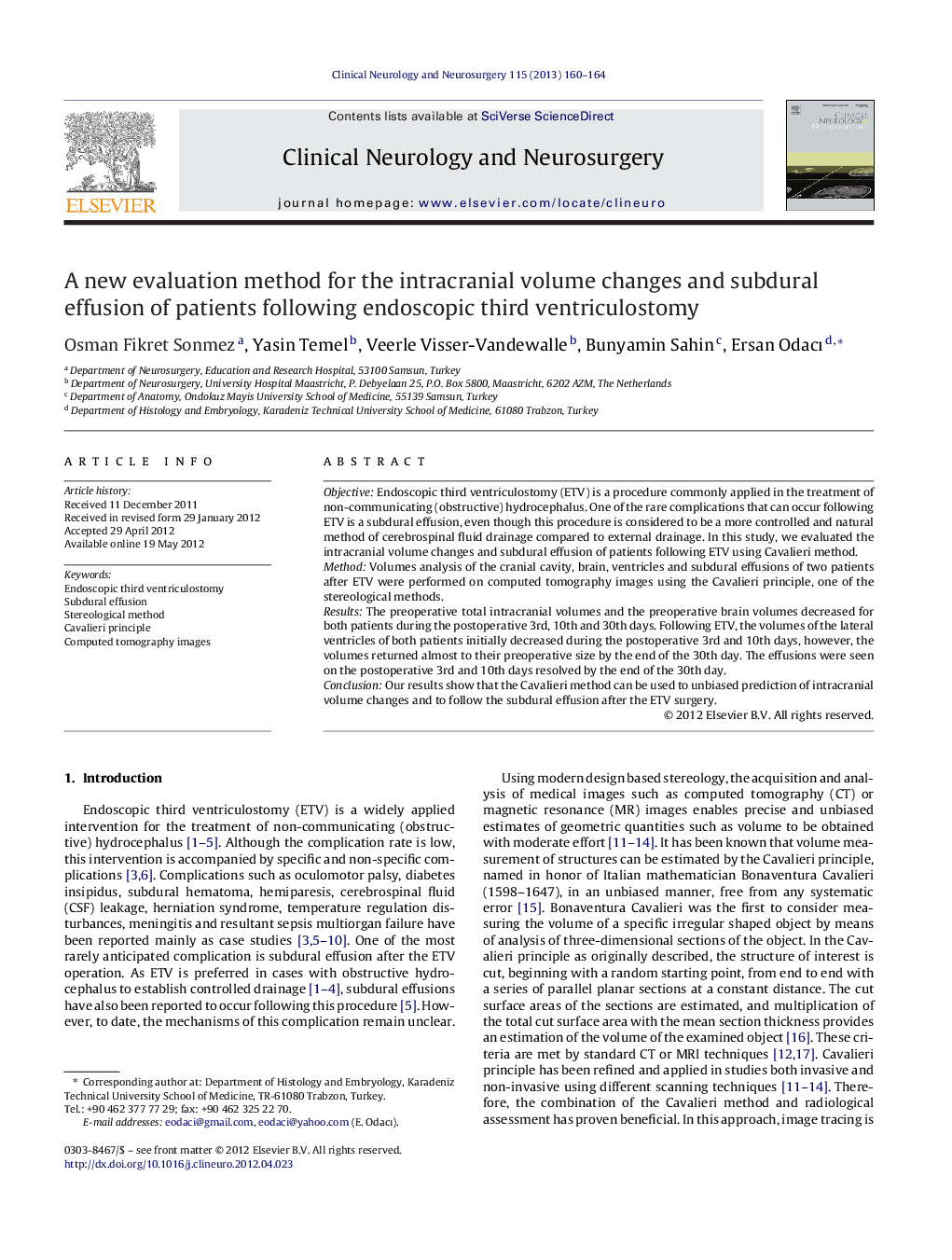| Article ID | Journal | Published Year | Pages | File Type |
|---|---|---|---|---|
| 3040876 | Clinical Neurology and Neurosurgery | 2013 | 5 Pages |
ObjectiveEndoscopic third ventriculostomy (ETV) is a procedure commonly applied in the treatment of non-communicating (obstructive) hydrocephalus. One of the rare complications that can occur following ETV is a subdural effusion, even though this procedure is considered to be a more controlled and natural method of cerebrospinal fluid drainage compared to external drainage. In this study, we evaluated the intracranial volume changes and subdural effusion of patients following ETV using Cavalieri method.MethodVolumes analysis of the cranial cavity, brain, ventricles and subdural effusions of two patients after ETV were performed on computed tomography images using the Cavalieri principle, one of the stereological methods.ResultsThe preoperative total intracranial volumes and the preoperative brain volumes decreased for both patients during the postoperative 3rd, 10th and 30th days. Following ETV, the volumes of the lateral ventricles of both patients initially decreased during the postoperative 3rd and 10th days, however, the volumes returned almost to their preoperative size by the end of the 30th day. The effusions were seen on the postoperative 3rd and 10th days resolved by the end of the 30th day.ConclusionOur results show that the Cavalieri method can be used to unbiased prediction of intracranial volume changes and to follow the subdural effusion after the ETV surgery.
